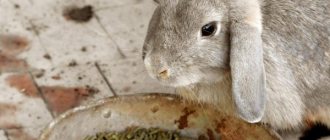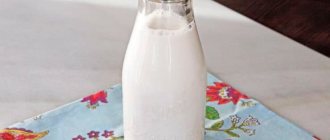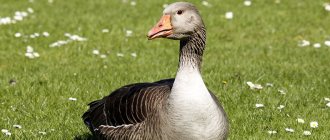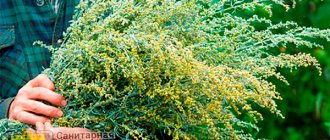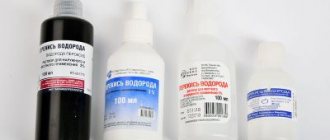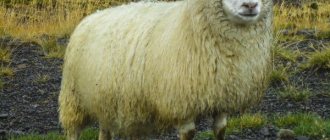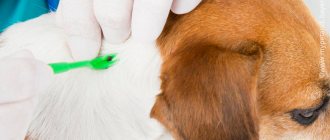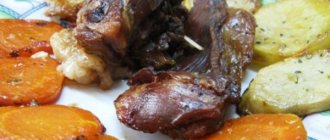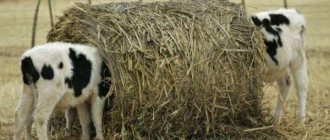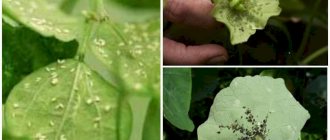Slaughtering a bull is a responsible matter that requires experience and knowledge. The slightest mistake can lead to undesirable consequences - at least to a decrease in the quality of meat. Without knowing how to slaughter a bull, it is better to invite an experienced slaughterer or take the animal to a meat processing plant for the procedure. If this is not possible, then you should carefully study the slaughter instructions and strictly follow them.
Bull slaughter
Which cattle are subject to slaughter
Healthy cows and bulls are subject to cutting for meat. Even if sanitary standards are observed on the farm, an inspection and conclusion from a veterinarian is required. If a bull or cow shows symptoms of an incurable disease that is dangerous to the entire livestock, they are also subject to slaughter. But the carcasses are not processed, but burned in animal burial grounds.
Dangerous cow diseases include foot and mouth disease, rabies, tetanus, and anthrax. After killing the bulls, an examination of the internal organs is carried out, since some parasitic infections occur without external symptoms. Sometimes an autopsy reveals an enlarged liver, riddled with passages of parasites. In this case, the cow carcass must also be destroyed.
The slaughter of healthy bulls and cows may be delayed for the following reasons:
- vaccinations;
- administration of antibiotics;
- treatment of parasites and non-dangerous diseases.
From the day of vaccination against foot-and-mouth disease until slaughter they wait 21 days, and against anthrax - 14 days. The killing of a calving cow is delayed for two weeks so that it can nurse the newborn calf.
Use of carbon dioxide
Using carbon monoxide, as already mentioned, meat processing plants can slaughter calves or young bulls. To perform this procedure in this case, special carbon dioxide equipment is used. When using this technology, animals are first placed in a special sealed chamber. Next, a large dose of carbon dioxide is supplied to this box, causing the bull to fall asleep. The slaughter procedure using this technology usually takes no more than 3-5 minutes.
Optimal time
Bulls actively gain weight up to ten months from birth. During this period, the natural growth of the body occurs, and the properties of meat breeds for the formation of muscle mass appear. Fattening cows helps achieve maximum results. After a year of life, with the end of physiological development, the weight gain of bulls slows down significantly and occurs only through fattening. Animals have a distended stomach, they eat a lot, but gain little weight. Therefore, farmers do not consider it rational to continue fattening and keeping cows.
Expert opinion
Zarechny Maxim Valerievich
Agronomist with 12 years of experience. Our best country expert.
Ask a Question
Animals are usually slaughtered in the fall. The premises of meat processing plants are kept cool. To slaughter a domestic bull, choose a cool morning.
When a cow is slaughtered
Experienced breeders advise sending cattle to slaughter when they are 1 year old. During this period of time, the animal manages to gain the required body weight. In addition, farmers do not have to spend a lot on feeding it. After one year of age, growth is no longer so active.
Closer to the autumn cold, a cow that was born in the spring is slaughtered. This is due to the fact that over the summer the cattle manage to gain muscle relief as a result of receiving a large amount of nutrients. In addition, when pastured, the quality of the resulting meat significantly improves.
If males are castrated, they will begin to quickly gain weight, regardless of their diet and diet. It is better to slaughter in the morning, since at this time it is still cool and there are practically no insects. However, farm workers should take into account that cutting and skinning a carcass takes more than 3 hours.
Preparation for the process
The slaughter of cows in production is carried out after a veterinary examination of the animals and the preparatory period.
Veterinarian's permission
The slaughterhouse has a full-time veterinarian who conducts external inspections and measures the temperature of animals. If signs of treatable diseases are detected, the cows are prescribed treatment and then re-examined. If the bull is healthy, the doctor issues written permission and he is prepared for the next stage.
Cow preparation
A healthy animal is transferred to a separate stall. During the day, the cow is given a lot of water, but not fed. Fasting cleanses the bull's intestines, and during the procedure the skin does not get dirty and the room remains clean. Animals are not kept on a starvation diet for longer than a day, as the body begins to use up accumulated fat, and the slaughter yield of meat decreases.
Preparing cows for slaughter also includes:
- cleaning fur, hooves;
- measuring and calculating animal volumes;
- weighing.
Bulls are washed so as not to infect the meat with microbes when cutting the carcass. It is also important to keep the animals in a calm mood. Fear reduces the amount of lactic acid in meat. As a result, its color deteriorates and its shelf life is reduced.
Bulls should not be beaten, since the blood from the hematomas remains in the soft tissues during exsanguination. Areas of hemorrhage are cut out, losing some of the valuable meat.
Construction of a slaughterhouse
On an industrial scale, cattle slaughter occurs in conveyor slaughterhouses. These are conveyor-type productions - from animal slaughter to cutting.
After transportation, the cattle are unloaded into stalls. If a veterinary examination has not been carried out previously, it is carried out in this pen. Cows can also be kept in the stall on a starvation diet.
The next stage is the transfer of livestock to the slaughterhouse. Large bulls are secured in a pen one at a time, where the operator stuns the animal with an air pistol. Next, the cattle are fixed by the pelvic limb with a chain to the conveyor and, after determining the live weight, the carcass is subjected to step-by-step processing:
- bleeding;
- separation of the head and distal limbs;
- skinning;
- rectal department;
- opening cavities and removing entrails;
- cutting up carcasses.
The technology of slaughter and subsequent processing of bull carcasses in industrial slaughterhouses is characterized by a high degree of process automation and careful compliance with sanitary and hygienic standards. All equipment and inventory are sanitized during breaks between contacts with meat, the staff sanitizes their hands and goes through disinfection barriers.
Mini-slaughterhouses for cattle are set up similarly. The slaughterhouses we produce for 2-50 heads are equipped with a place for slaughter, a small conveyor on which bleeding and subsequent processing of the carcass is carried out. Depending on the configuration, the meat processing plant can be additionally equipped with refrigeration equipment and a primary meat processing workshop.
What is necessary?
To slaughter bulls, farmers use:
- heavy hammer;
- twine with winch;
- knives.
Before killing, the cow is stunned with a sledgehammer so that she loses consciousness, but is not afraid. Meat processing plants use additional equipment and various methods to slaughter a bull. But what is common to slaughter on a private farm and in production is the draining of blood, skinning and removal of internal organs, for which sterile containers are prepared in advance.
To cut a cow carcass into pieces you will need an ax and a large cleaver. At the end of the work, the meat and liver are sent for storage in refrigerated chambers, and the cutting area is washed and disinfected.
Slaughter by means of a mask with shooting (Sigmund's method)
This mask differs from Bruno’s mask in that its metal part is much larger and more massive, and it is also attached to the animal’s head opposite the forehead. The short barrel of the pistol, equipped with a bullet cartridge, is screwed into a piece of metal. This method has the advantage that it acts automatically and does not depend on the skills and experience of the fighter, and also when using this method, no special destruction of the medulla oblongata is required through a probe or rod inserted into the opening of the skull. On the other hand, this method not only makes the brains completely unsuitable for sale, but also has the significant inconvenience that the sounds of shots in the slaughterhouse cause the remaining animals to be slaughtered to become very nervous, which affects the quality of the meat. And finally, fresh meat absorbs the disgusting smell of gunpowder combustion products.
Cattle slaughter methods
The main requirement for the cow slaughter procedure is speed and painlessness. Over the centuries-old history of cattle breeding, methods of varying degrees of humanity have been developed. Preference for a certain method is given depending on the weight of the bull, the place of slaughter and the professional skills of the slaughterer.
Stun with Bleeding
The ancient village method of slaughter is as follows:
- the cow's head is tied by the horns;
- they hit the forehead with a heavy hammer;
- hang;
- They cut the carotid artery and bleed.
Advantages and disadvantages
apparent simplicity of execution.
it is difficult to stun the animal the first time;
in agony, the behavior of cows is unpredictable, the slaughterer may get hurt;
when the bull is not completely bled, the quality of the meat decreases;
it is difficult to determine the degree of bleeding.
In the old days, farmers believed that being hit by a hammer gave a cow a concussion. But to turn off the animal’s consciousness, it takes about fifteen blows. As a result, a seemingly simple method plunges the bull into agony and fear, and the blood does not drain well.
To determine whether the blood has drained completely, it is collected in a measuring container. The volume of blood in a cow's body is 7-8 percent of its weight. Therefore, before slaughter, it is necessary to weigh the animal, and then calculate the volume and percentage of blood drained. If it is equal to 3.5-4 percent of the total mass, the bleeding was successful and the meat is not spoiled.
See also
Top 6 growth stimulants for cattle, what hormones and anabolic steroids should be givenRead
Slow bleeding
An ancient way to slaughter a bull from the nomadic peoples of Northern Europe and Siberia: suddenly stab it in the neck with a long knife so as to pierce the heart. With an accurate hit, the animal quickly dies, and blood flows out through the cut artery in the neck.
Advantages and disadvantages
the bull does not have time to get scared;
One hole is made in the skin.
To properly slaughter calves, you need an experienced slaughterer;
contamination of the premises with blood in an unsuccessful attempt.
Small bulls are slaughtered using slow bloodletting. They are easier to fix, since the fatal blow must be delivered accurately the first time. Due to an error when slaughtering a large bull, the meat will spoil, and the slaughterer may suffer from the hooves of a frightened animal.
Using a buterol with a cutter
Buterol is a special slaughtering tool that resembles a hammer on a long handle. On one side it looks like a cone-incisor. On the other side there is a hook. Buterol weighs almost 2.5 kilograms. A bull's skull is pierced in the frontal lobe with a sharp incisor to destroy the brain.
Advantages and disadvantages
the animal dies instantly;
little blood at slaughter.
heavy tool;
A precise strike is required.
After killing, you can quickly move on to bleeding and cutting the cow carcass for meat. Without experience with buterol, slaughter is difficult to complete.
Slaughter with a mask
A buterol or chisel is also used to deliver a fatal blow to the bull's skull. But to make it easier to get to the desired area, a leather mask with a hole is put on the animal’s face.
Advantages and disadvantages
no significant ones were found.
requires a strong blow;
The cow's brain does not always die.
While maintaining consciousness, the matter is completed with a metal or willow rod, which is inserted into a hole in the bull's skull.
Skull crushing
The following technology represents an attempt to put livestock slaughter on a conveyor belt:
- the bull is placed on a movable rail platform, fixing the body with the sides and the head with holders;
- the platform slides down at speed;
- Along the way, the bull hits his forehead on a metal crossbar.
Advantages and disadvantages
the death of cows occurs without human intervention;
You can kill a lot of animals quickly.
preparation and descent frighten the animals;
the head is unsuitable for implementation.
The method was developed for automatic slaughterhouses. The meat of frightened bulls loses value.
Sigmund's method (mask with shooting)
The slaughterer puts a mask on the animal's face. Instead of a hole in the forehead, it is equipped with a metal plate into which the barrel of the gun is inserted and the trigger is pulled.
Advantages and disadvantages
does not require effort or special skills;
fast in execution.
a brain-damaged bull should not be allowed to be sold;
The pop of the shot scares the cows in line.
If the first animal dies calmly, then the next animal will be stressed.
English way
The essence of the method:
- a cow is stunned by a blow to the head;
- puncture the lung between the ribs;
- pump air, causing suffocation.
Advantages and disadvantages
the meat fills with blood.
limited shelf life of products.
An English slaughterhouse patented this method of slaughtering bulls to obtain a rare steak.
Kalmyk method of slaughter
Kalmyks also valued fresh meat with blood, so the following method was used for slaughtering livestock:
- stunned a cow;
- cut through the sternum or back, exposing the heart;
- The main arteries were ligated.
Advantages and disadvantages
You can get meat for connoisseurs.
painful for the cow;
labor-intensive for the slaughterer.
Working on a living heart requires the skills and composure of nomadic Kalmyks.
Russian way
How cattle are slaughtered in Rus':
- they tie a string to the bull's horns and lower his head down;
- the string is pulled under the stomach and fixed;
- standing in front of the bull, they thrust a knife between the skull bone and the first cervical vertebra, pointing the tip forward;
- they hit the lower part of the neck with a knife to draw blood.
Advantages and disadvantages
the animal is reliably stunned by the first knife blow;
performed by one person;
the cow carcass is well bled;
meat is stored for a long time.
the cow should fall on its left side on the slaughterer's side;
between the first and second blow of the knife, as little time as possible should pass.
If a cow falls on its right side during slaughter, it will have to be turned over. Otherwise, it is impossible to reach the main arteries in the neck and let the blood flow.
Jewish method
The method involves the use of a specially sharpened knife to comply with the rules of kashrut.
The slaughterer and assistant act in stages:
- the bull's legs are tied, ropes are pulled so that he falls on his side;
- one person pulls the animal's head back;
- the second completely cuts the bull's throat along with the cervical vertebrae and spinal cord.
Advantages and disadvantages
absence of damage and hemorrhages in the cow’s brain.
one person cannot cope;
It is not possible to drain the blood well from the carcass.
The Jewish method of slaughtering cattle is considered humane. But without a knife that cuts cleanly through the ox hair, the meat will not be kosher.
Using electricity
The method was invented by the Americans. Cows are stunned by electric shock.
Advantages and disadvantages
animals are killed quickly and painlessly.
safety precautions are required;
The permissible current level must not be exceeded.
Miners work in rubber boots, standing on rubber mats. For one-year-old cows, it is enough to apply 70-90 Volts for five seconds to turn off consciousness. At high power, the blood clots and the meat becomes unfit for food.
Industrial face
In production they use a combination of conveyor and pistol methods, but without a mask. The animals are brought onto a mobile platform and their heads are fixed with clamps. The conveyor moves to a machine with a pneumatic pistol, where the cows are stunned with a blow to the area where the horns and eyes intersect. At a meat processing plant, slaughter includes bleeding and skinning bulls. To do this, stunned animals are suspended by their legs.
Advantages and disadvantages
the process is controlled by professionals;
technology is followed.
blood is retained in the meat.
At a slaughterhouse, each stage of slaughter takes place in a special room and sterile conditions.
See also
Feeding and maintenance of insemination bulls, use and giant individualsRead
Veterinary slaughter option
The method is based on the Russian method. The bull is stunned by a knife blow between the skull and the first cervical vertebra. Then they hit the same place again, but point the blade back.
Advantages and disadvantages
quick stun;
blood drains well;
high quality meat.
Veterinary education is required.
Slaughtering cattle requires knowledge of anatomy and knife skills.
More modern methods of cattle slaughter
At large enterprises, the pneumatic gun is replaced with a gas chamber.
Advantages and disadvantages
short exposure time for cows - 3-7 minutes;
the ability to process several animals at the same time.
livestock is restless;
high cost of equipment.
Carbon dioxide is supplied to the chambers.
Proper stunning of livestock
First of all, the animal must be securely restrained. To do this, its horns must be firmly fixed to the support. This should be done carefully, otherwise the animal may become agitated and break free.
To stun, use a wooden hammer or other blunt, hard object. The weight of the device must be 2 kilograms or more, the blow must fall in the center of the forehead.
Some slaughterers prefer to use a sharp object to strike at the junction of the occipital bone and the first cervical vertebra. Finding the right place is quite easy, and getting into it is also not difficult. During a stun, you need to act decisively and quickly, without hesitation. If you don't hit hard enough, you will hurt the animal instead of knocking it unconscious. Think in advance if you can do this.
All preparations must be carried out away from the place where the animal is kept, otherwise the bull will feel danger and will worry. This will lead to many problems. An agitated large animal will be more difficult to secure and strike. In addition, stress negatively affects the quality of the meat product.
Rules for processing carcasses
How to slaughter a bull at home:
- prepare a free area in the fresh air or room;
- place plastic film on the ground or floor;
- place a container nearby for collecting blood and organs;
- slaughter a cow with at least two people, preferably four;
- one person must have experience in slaughter and be a slaughterer or veterinarian;
- stun the bull in a convenient way;
- hang the carcass upside down;
- cut the veins in the neck with a sharp knife and let the blood drain into a placed container.
The carcasses of bulls and cows weigh 500 kilograms, some reaching a ton. Stunning, hanging and bleeding must be done very quickly, otherwise the meat will spoil. Therefore, an experienced miner and assistants must participate in the work.
Necessary equipment
You need to prepare thoroughly for the slaughter of a bull, taking care of the necessary tools. What you will need during the procedure:
- sledgehammer;
- sharp strong knife;
- blood collection containers;
- rope;
- clean rags.
Sledgehammer for slaughter
Skinning and dressing
After bleeding, the cows begin skinning. Approximate diagram:
- ears are cut off;
- cuts are made around the nose, lips and horns;
- cuts lead from the nostrils to the horns;
- cut the skin on the limbs lengthwise;
- a dissection is carried out from the sternum to the groin;
- make a slit around the tail.
In the village, the skin is removed by hand, trimming with a knife, from a hanging bull or laying it on the ground. At the end, the head and hooves are cut off from the carcass down to the knee and hock joints.
Expert opinion
Zarechny Maxim Valerievich
Agronomist with 12 years of experience. Our best country expert.
Ask a Question
The skin removed from the cow is cleaned of fat and meat, straightened and secured on wooden struts with the nap facing down. After 2 hours, the inside is wiped with salt and left to dry for 5 days.
Properly dried bull hide remains soft and odorless.
Flaying
Cow hide is considered the highest quality material used for the manufacture of leather goods. As a result of skinning and dressing, following the process correctly, you can get smooth, soft leather that will be durable and not lose its external attractive properties for a long time.
The quality of the material obtained at the end of dressing largely depends on the age of the animal. The skin of a young bull or calf is considered the most valuable. In particular, calves that have not yet been born can be used as a source of leather for humans.
Skinning is the initial stage of cutting cattle. After cropping the ears, the skin near the nostrils and lips is cut in a ring shape. The incision continues from the nostril to the horn and then follows along the forehead. The skin is also cut at the base of the horns using the ring-shaped method.
The body is placed on a sterile film, turned over and the skin is cut along the chest and belly from the neck to the anus. Circular incisions are made near the limbs and anus. The lower parts of the hind legs are cut off at the hocks, and the front legs at the carpals. Next, the skin is removed from the neck, legs, sides and sternum, and the removal is completed in the area of \u200b\u200bthe scrotum or udder.
There is no need to rush while skinning as the skin is tender in many parts. Therefore, it is removed by hand, only occasionally resorting to a sharp knife.
The removed skin is cleaned of any remaining meat and fat and left to cool for a couple of hours, flattened, fur side down, then salted with table salt without iodine. The leather will dry completely only after five to seven days, and then you can start dressing.
Signs of improper processing will be the presence of an unpleasant odor, insects, or severe ossification of the skin.
How to remove animal entrails
Removal of internal organs is called evisceration. Using the procedure, valuable liver is extracted, but first the intestines are removed. Feces remain in the digestive tract, despite the cow's daily fast. Also dangerous is the microflora, consisting of beneficial and pathogenic bacteria. To avoid contamination of the meat, the organs must be removed within the first forty minutes after the bull is slaughtered. It is more convenient to carry out gutting on a suspended carcass:
- ligate the esophagus;
- cut the cow's chest down the middle;
- cut the sternum and fusion of the pelvic bones;
- remove the intestines, bladder and gall bladder, cutting the supporting ligaments;
- the remaining organs are removed;
- Use a knife to clean the inner walls of the carcass from the remains of the ligaments and diaphragm.
Opening the abdominal cavity of a cow must be done carefully so as not to damage the walls of the intestines, urinary and gall bladder. Otherwise, bile and biological fluids containing decay products and bacteria will spread throughout the soft tissues. But the meat can be saved if you quickly wash it with water and potassium permanganate.
The organs are placed in containers and examined. If tumors or traces of helminths are found, the entrails are discarded. To determine whether it is safe to eat meat from a cow with damaged organs, the presence and opinion of a veterinarian is required.
Veterinarians at a meat processing plant
Veterinarians must always be present on the territory of the meat processing plant - they control the process and issue veterinary certificates. It happens that meat is bought only for this certificate. This conclusion can be drawn because there are buyers who ask how much meat they need to buy in order to receive this certificate.
Having heard the answer, they order the minimum. From my colleagues at the enterprise, I heard that many enterprises in the Russian Federation operate without veterinary control and successfully sell their products in Russia for many years.
